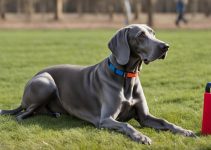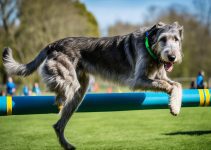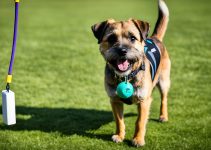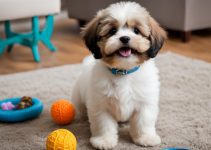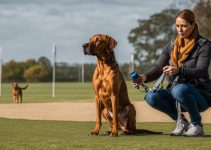Hello, I’m here to provide you with effective tips and tricks for training your English Bulldog. Bulldogs are unique in their training needs, so it’s important to approach their training with patience and understanding. Whether you’re starting with a puppy or an adult Bulldog, these techniques will help you create a well-behaved and happy companion.
From obedience training to behavior training, we’ll cover it all. Let’s dive in!
English Bulldog Training Unlocked
- Consistency and positive reinforcement are key in English bulldog training.
- Begin training your Bulldog at a young age to establish good habits.
- Socialize your Bulldog with other dogs to ensure they are well-adjusted and friendly.
- Grooming is crucial for Bulldogs, especially cleaning their adorable wrinkles.
- Teach basic commands and potty training early on to avoid accidents.
Socializing Bulldogs with Other Dogs
Bulldogs are social creatures and it’s important to get them used to meeting new canines. Socialization plays a crucial role in their development, ensuring they can interact appropriately with other dogs and humans.
When socializing Bulldogs with other dogs, it’s essential to focus on quality interactions. This means introducing them to dogs that have good social skills and are friendly and well-behaved. Exposure to calm and confident dogs can help Bulldogs learn appropriate behaviors and build positive associations with other canines.
The American Kennel Club (AKC) has a program called S.T.A.R. Puppy, which is highly recommended for socializing Bulldogs to other dogs. This program provides a structured approach to teaching basic obedience skills and promoting positive interactions with people and other dogs.
English bulldog training techniques that emphasize positive reinforcement are particularly effective when it comes to socialization. Rewarding desired behaviors with treats, praise, and playtime can help your Bulldog feel more comfortable and confident in the presence of other dogs.
Remember, each Bulldog is unique, so it’s important to take their individual temperament and preferences into account when socializing them. Gradually increase the level of difficulty in social interactions, starting with controlled environments and gradually introducing them to different dogs and situations.
By following these socialization techniques and utilizing positive reinforcement English Bulldog training, you can help your Bulldog become well-adjusted, friendly, and sociable with other dogs.
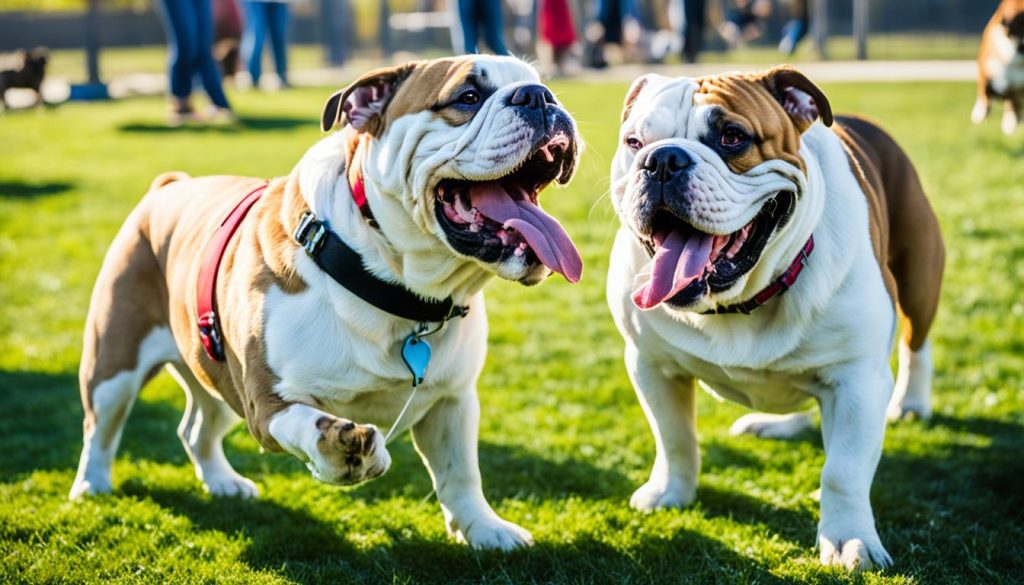
- Socialize Bulldogs with other dogs in controlled environments
- Expose them to well-behaved and friendly dogs
- Utilize the AKC S.T.A.R. Puppy program for structured socialization
- Use positive reinforcement techniques to reward desired behaviors
- Take individual temperament and preferences into account
Grooming Bulldogs
Grooming is an essential part of caring for your adorable Bulldog. While those wrinkles may be cute, they can also harbor bacteria if not cleaned regularly. To keep your Bulldog healthy and comfortable, it’s important to establish a regular grooming routine that includes cleaning their wrinkles and maintaining their coat.
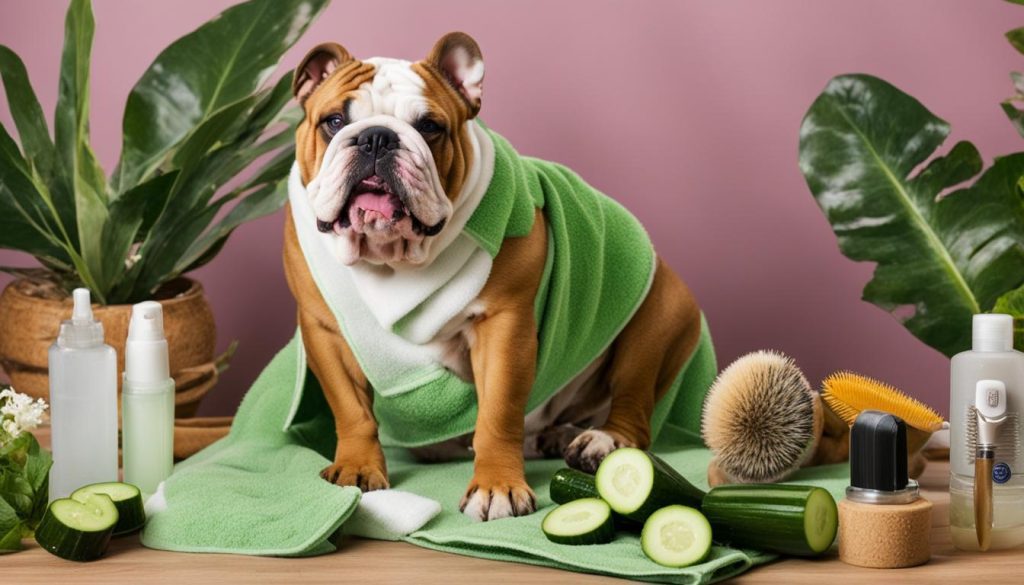
Start from a Young Age
Getting puppies used to grooming from a young age is crucial. Introduce your Bulldog puppy to grooming gradually, keeping the sessions short and positive. This helps them develop a positive association with grooming activities and builds their tolerance to routine maintenance, such as nail trimming and teeth brushing.
Making Grooming a Positive Experience
Grooming sessions can be a fun and interactive experience for both you and your Bulldog. Use treats, praise, and positive reinforcement to make grooming a rewarding game. This helps to create a positive association with grooming activities, making them more cooperative and relaxed during the process.
Key Grooming Tasks
- Brushing: Regular brushing helps to remove loose hair, prevent matting, and keep their coat looking healthy. Use a soft brush or a grooming glove to gently brush your Bulldog’s coat.
- Cleaning Wrinkles: The wrinkles on a Bulldog’s face and body require special attention. Use a mild cleanser and a soft cloth to gently clean between the folds, taking care to dry them thoroughly to prevent moisture-related skin issues.
- Ears and Eyes: Check your Bulldog’s ears regularly for signs of infection, and gently wipe them with a damp cloth if needed. Additionally, keep their eyes clean by wiping away any discharge with a clean, damp cloth.
- Nail Trimming: Trim your Bulldog’s nails regularly to prevent overgrowth and discomfort. Use a pair of dog nail clippers or a grinder, being cautious not to cut into the quick.
- Dental Care: Bulldogs are prone to dental issues, so establishing a dental care routine is important. Brush your Bulldog’s teeth regularly with a dog-friendly toothpaste and toothbrush, and provide dental chews to promote oral health.
Grooming your Bulldog not only keeps them looking their best but also helps maintain their overall health and well-being. Regular grooming sessions promote bonding, help prevent skin issues, and allow you to monitor any changes in their body. By using positive reinforcement bulldog training techniques, you can make grooming a positive and enjoyable experience for both you and your furry friend.
Basic Commands and Potty Training
When it comes to English bulldog training, starting with basic commands is essential for building a strong foundation. Teaching commands like “Sit” and “Stay” not only help establish your role as the leader but also promote obedience and discipline.
One important command to teach your Bulldog is “Drop It.” Bulldogs can be prone to resource guarding, and teaching them to release items on command can prevent potential conflicts or accidents.
In addition to command training, potty training is crucial for English Bulldogs. Establishing a consistent routine and using positive reinforcement can greatly assist in the potty training process. Take your Bulldog outside regularly and reward them with praise and treats when they eliminate in the designated area.
To aid in potty training, crate training is highly beneficial for Bulldogs. By providing a comfortable and secure space, crates can help prevent accidents in the house and teach Bulldogs to hold their bladder. Introduce your Bulldog to the crate gradually, making it a positive experience with treats and toys.
Remember, patience and consistency are key to English bulldog training. Keep training sessions short, fun, and positive, and always reward their good behavior.
Exercise and Activities for Bulldogs
When it comes to English bulldog training, exercise plays a crucial role in keeping your furry friend healthy and happy. Bulldogs are known for their unique physiology, so it’s important to be mindful of their exercise needs to prevent breathing difficulties. Here’s what you need to know about exercise and activities for bulldogs:
- Exercise in Cooler Temperatures: Bulldogs are sensitive to heat, so it’s best to exercise them early in the morning or late in the evening when the temperatures are cooler. This will help prevent overheating and breathing difficulties.
- Provide Ample Water: Bulldogs tend to drool and pant a lot, which can lead to dehydration. Always make sure to have plenty of fresh water available during exercise sessions to keep them hydrated.
- AKC Activities: Bulldogs can participate in various activities offered by the American Kennel Club (AKC). Obedience classes and agility training are great options to engage your bulldog both mentally and physically, while also providing an opportunity for socialization.
- Mental Stimulation: Bulldogs have an intelligent and curious nature, making mental stimulation essential for their overall well-being. Engage them in puzzle toys, interactive games, and other brain-teasing activities to keep their minds sharp and prevent boredom.
By incorporating regular exercise and activities into your bulldog’s routine, you can ensure they lead a healthy and fulfilling life. Remember, professional English bulldog training services and bulldog training classes can provide additional guidance and support in developing a well-rounded training program for your beloved bulldog.
Conclusion
English Bulldog training requires dedication and consistency. It is important to remember that Bulldogs are unique and have specific training needs. By following these tips and tricks, you can effectively train your Bulldog and have a well-behaved and happy companion.
One key aspect of English bulldog training is using positive reinforcement. Rewarding desired behaviors with treats, praise, and affection can motivate your Bulldog to repeat those behaviors. Patience is also crucial, as Bulldogs may take some time to grasp commands.
If you are struggling with bulldog training or want professional guidance, consider enlisting the help of a professional bulldog trainer. Professional bulldog training services can provide specialized expertise and tailored training programs to address your Bulldog’s specific needs.
Remember, effective bulldog training techniques involve consistent practice, patience, and positive reinforcement. With dedication and the right guidance, you can train your Bulldog to be a well-mannered and obedient companion.
FAQ
Why is socialization important for Bulldogs?
Bulldogs are social creatures and socialization helps them become comfortable and confident around other dogs. The AKC S.T.A.R. Puppy program is recommended for socializing Bulldogs to other dogs.
How should I groom my Bulldog?
Bulldogs have wrinkles that need regular cleaning to prevent bacterial build-up. Start grooming from a young age and make it a positive experience using treats and positive reinforcement.
What are some basic commands I should teach my Bulldog puppy?
Start with basic commands like “Sit” and “Stay.” It’s also important to teach the “Drop It” command to prevent resource guarding. Potty training is crucial for house training, and crate training can be useful for both potty training and keeping Bulldogs out of trouble.
How should I exercise my Bulldog?
Bulldogs should be exercised in cooler temperatures to avoid breathing difficulties. Exercise early in the morning or late in the evening and always provide ample water. Bulldogs can participate in AKC activities like obedience classes and agility. Mental stimulation is also important for their overall well-being.
What is the key to effective Bulldog training?
Consistency and positive reinforcement are essential in Bulldog training. By being dedicated and consistent, you can have a well-behaved and happy Bulldog companion.

